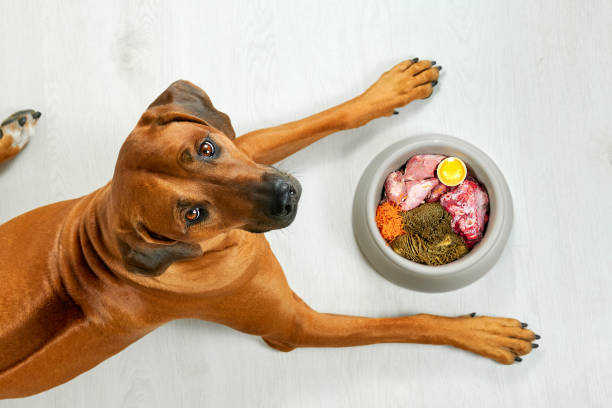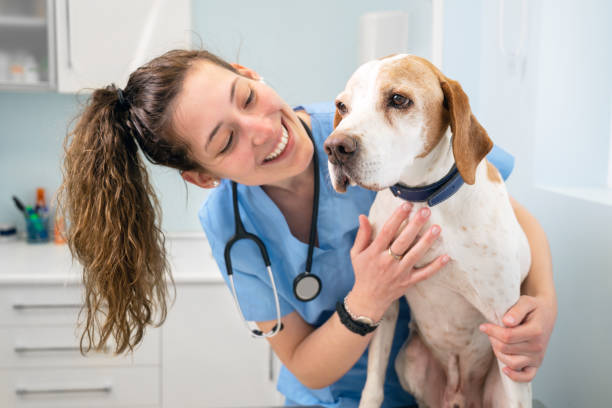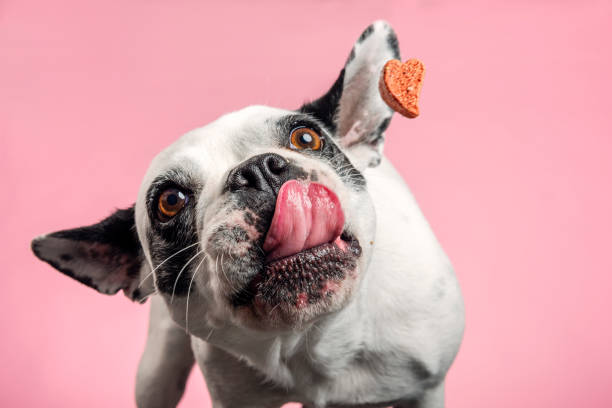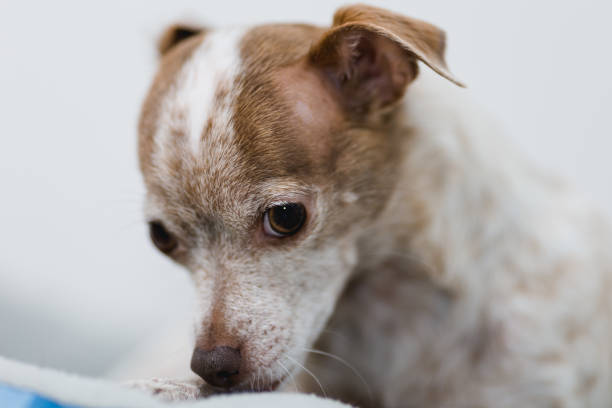What Can Dogs Eat and Not Eat?
This post contains affiliate links. This means I will make a commission at no extra cost to you should you click through and make a purchase. Read the full disclosure here.Welcoming a furry friend into your home is a joyous occasion, and as a responsible pet owner, ensuring your dog’s well-being is paramount. One of the key contributors to your dog’s health is a balanced and appropriate diet. While those puppy eyes may make it tempting to share your meal, not all human foods are safe for dogs. In this comprehensive guide, we will delve into the world of canine nutrition, exploring what dogs can eat to thrive and what foods should be avoided to keep them healthy and happy.
The Importance of Proper Nutrition for Dogs

Dogs, like humans, require a balanced diet to support their overall health, growth, and energy levels. A well-formulated diet contributes to a shiny coat, strong bones, and a robust immune system. Proper nutrition also plays a crucial role in preventing common health issues such as obesity and dental problems. Understanding the nutritional needs of your dog is key to providing a diet that aligns with their age, size, and breed.
The Dangers of Feeding Dogs Inappropriate Foods
Feeding your dog the wrong foods can lead to a range of health problems, from digestive issues to severe toxicity. Some seemingly harmless items in your kitchen can pose a significant threat to your canine companion. It’s not just about knowing what to include in their diet but also being aware of the items that should be strictly off-limits. As we explore the do’s and don’ts of canine nutrition, you’ll gain insights into creating a safe and nutritious menu for your furry friend.
Overview of the Blog Post Content
This blog post aims to serve as your go-to resource for understanding the dietary needs of dogs. We will begin by exploring the types of foods that are not only safe for dogs but also beneficial for their well-being. From high-quality commercial dog food to wholesome fruits and vegetables, we’ll guide you on making informed choices. Additionally, we’ll delve into the red flags associated with certain foods, household items, and plants that can be harmful to your dog’s health. Stay tuned for expert tips, practical advice, and the importance of consulting with your veterinarian to ensure your dog leads a happy, healthy life. Let’s embark on this journey to decode the intricacies of what our four-legged companions can and cannot eat.
Safe and Healthy Foods for Dogs
Now that we understand the significance of a proper canine diet, let’s delve into the foods that can contribute positively to your dog’s health and happiness.
High-Quality Commercial Dog Food
Understanding Dog Food Labels
Commercial dog food is formulated to meet the nutritional needs of dogs at different life stages. When selecting dog food, pay attention to the ingredients list and nutritional information on the label. Look for a balance of protein, fats, carbohydrates, and essential nutrients. Be cautious about fillers and additives that may not offer nutritional value.
Selecting the Right Type of Dog Food
Dog food comes in various forms, including dry kibble, wet canned food, and raw options. Each type has its pros and cons, and the choice may depend on your dog’s preferences, age, and health condition. Consult with your veterinarian to determine the most suitable diet for your furry friend.
Lean Meats
Chicken, Turkey, and Beef
Lean meats are excellent sources of protein for dogs. Chicken, turkey, and beef can be included in your dog’s diet, but it’s crucial to remove bones and excess fat. Cooked meat without added seasonings is the safest option. Avoid feeding raw meat, as it can carry the risk of bacterial contamination.
Cooking Methods and Precautions
When preparing meat for your dog, opt for simple cooking methods such as boiling or baking. Avoid using seasonings, garlic, or onions, as these can be harmful to dogs. Remove any bones, as they pose a choking hazard and may splinter, causing internal injuries.
Fruits and Vegetables

Apples, Blueberries, and Carrots
Many fruits and vegetables offer valuable vitamins and minerals for dogs. Apples (without seeds), blueberries, and carrots are popular choices. These can be served as treats or added to your dog’s meals in moderation. Always wash fruits and vegetables thoroughly and cut them into bite-sized pieces to prevent choking.
Safe Preparation and Portion Control
While fruits and vegetables are nutritious, some can be high in natural sugars. Monitor your dog’s portion sizes to maintain a balanced diet. Remove seeds, pits, and tough cores from fruits before serving. Steaming or lightly cooking vegetables can make them easier for dogs to digest and extract nutrients from.
By incorporating these safe and healthy foods into your dog’s diet, you provide them with the essential nutrients they need for optimal health. In the next section, we’ll explore foods that are off-limits for dogs and the potential risks associated with them.
Foods to Avoid for Dogs
While it’s crucial to know what foods can benefit your dog, it’s equally important to be aware of items that can be harmful or even toxic to them. Vigilance in avoiding these foods is essential for maintaining your dog’s well-being.
Toxic Foods

Chocolate, Caffeine, and Alcohol
These items contain substances such as theobromine and caffeine, which are toxic to dogs. Ingesting even small amounts can lead to symptoms like vomiting, diarrhea, increased heart rate, and, in severe cases, it can be fatal. Keep chocolate, coffee, tea, and alcoholic beverages out of reach.
Grapes, Raisins, and Citrus Fruits
While the exact reason is not fully understood, grapes and raisins have been associated with kidney failure in some dogs. Citrus fruits, while not typically toxic, can cause digestive upset. It’s safer to avoid feeding these fruits altogether.
Harmful Substances
Onions, Garlic, and Chives
Allium plants, including onions, garlic, and chives, can cause damage to a dog’s red blood cells, leading to anemia. These ingredients are commonly found in many human dishes, so be cautious about sharing foods seasoned with them.
Xylitol and Artificial Sweeteners
Xylitol, a sugar substitute found in many sugar-free products, is extremely toxic to dogs. It can cause a rapid release of insulin, leading to hypoglycemia (low blood sugar), seizures, and liver failure. Check ingredient labels for xylitol and other artificial sweeteners, and keep products containing them away from your dog.
Bones and Certain Raw Meats

Risks Associated with Cooked and Uncooked Bones
Cooked bones can splinter, causing choking hazards and internal injuries. While raw bones are less likely to splinter, they still pose risks of bacterial contamination. Avoid giving your dog small bones, especially those from poultry, and supervise them closely when chewing on larger, raw bones.
Raw Meat Concerns and Potential Bacterial Contamination
While some proponents of raw diets for dogs argue for its benefits, it’s essential to recognize the potential risks, including bacterial contamination such as Salmonella and E. coli. Consult with your veterinarian before introducing raw meat into your dog’s diet, and ensure that any raw food is handled and stored with extreme care.
Being aware of these forbidden foods is the first step in keeping your dog safe and healthy. In the next section, we will explore common household items that may pose a threat to your furry friend, emphasizing the importance of creating a pet-friendly environment.
Common Household Items Harmful to Dogs
Beyond the realm of foods, several everyday household items can pose a threat to your canine companion. Awareness of these potential dangers is vital for creating a safe living environment for your furry friend.
Human Medications

Over-the-Counter and Prescription Medications
Many medications that are safe for humans can be extremely toxic to dogs. Pain relievers, cold medicines, and certain prescription drugs can cause a range of adverse reactions, from gastrointestinal issues to organ failure. Ensure that all medications are stored securely and out of your dog’s reach, and never administer any medication without consulting your veterinarian.
Safely Storing Medications Out of Reach
Dogs are naturally curious, and they might inadvertently ingest medications left within their reach. Store all medications in secure cabinets or containers, and be vigilant when taking pills to avoid accidental spills. If you suspect your dog has ingested any medication, seek immediate veterinary attention.
Household Plants
Toxic Plants and Flowers

Many common household plants and flowers can be toxic to dogs if ingested. Examples include lilies, azaleas, philodendrons, and poinsettias. Familiarize yourself with the plants in and around your home, and remove any that are known to be harmful to dogs.
Creating a Pet-Friendly Environment
Designing a pet-friendly space involves more than just avoiding toxic plants. Consider the placement of electrical cords, small objects that could be swallowed, and secure heavy furniture to prevent accidental tipping. Creating a safe and comfortable environment is key to ensuring your dog’s well-being.
Understanding the potential dangers of household items allows you to take proactive measures to keep your dog safe. In the next section, we will explore the signs of food poisoning or allergic reactions in dogs, empowering you to recognize and respond promptly to any health concerns.
Signs of Food Poisoning or Allergic Reactions in Dogs
As attentive pet owners, it’s crucial to be vigilant about the signs that may indicate your dog is experiencing food poisoning or an allergic reaction. Recognizing these symptoms early on enables prompt action and ensures your dog receives the necessary care.
Digestive Issues
Vomiting and Diarrhea
One of the most common signs of food-related issues in dogs is vomiting and diarrhea. While occasional upset stomachs may be normal, persistent or severe symptoms could indicate a more significant problem. Monitor your dog’s bathroom habits and consult your veterinarian if these issues persist.
Loss of Appetite
A sudden lack of interest in food can be a sign of an underlying issue. If your dog consistently refuses meals or shows a significant decrease in appetite, it’s essential to investigate and rule out potential health concerns.
Allergic Reactions
Itching, Swelling, and Hives
Allergic reactions in dogs often manifest as itching, swelling, or the development of hives. These symptoms can result from food allergies or sensitivities. If you notice excessive scratching, swelling around the face or paws, or the appearance of red welts, consult your veterinarian for guidance.
Respiratory Distress
In severe cases, allergic reactions can lead to respiratory distress, characterized by difficulty breathing, wheezing, or coughing. This is a medical emergency, and immediate veterinary attention is crucial. If you suspect your dog is experiencing respiratory distress, seek professional help without delay.
Understanding these signs allows you to act promptly and seek veterinary advice when necessary. In the concluding sections, we will emphasize the importance of regular veterinary check-ups and delve into the role of responsible pet ownership in ensuring your dog’s long-term health and well-being. Stay tuned for valuable insights and tips on maintaining a happy and healthy life for your canine companion.
The Importance of Consulting a Veterinarian
Ensuring your dog’s health goes beyond recognizing potential issues; it involves establishing a proactive and collaborative relationship with your veterinarian. Regular check-ups and prompt attention to any concerns are crucial aspects of responsible pet ownership.

Regular Check-Ups and Dietary Recommendations:
Routine Veterinary Visits
Schedule regular check-ups with your veterinarian to monitor your dog’s overall health. These visits allow for early detection of potential issues and provide an opportunity for your vet to recommend any necessary dietary adjustments based on your dog’s age, breed, and health status.
Vaccinations and Preventive Care
Stay up-to-date with vaccinations and preventive care measures recommended by your veterinarian. These play a crucial role in safeguarding your dog against common diseases and parasites, contributing to their overall well-being.
Emergency Care for Accidental Ingestion:
Contacting Your Veterinarian
If you suspect your dog has ingested something harmful, contact your veterinarian immediately. Time is often of the essence in cases of poisoning or allergic reactions. Provide as much information as possible about the ingested substance and follow your vet’s advice for immediate care.
Knowing the Location of Emergency Veterinary Services
Familiarize yourself with the location and contact information of emergency veterinary services in your area. Accidents can happen at any time, and being prepared ensures quick access to professional care in critical situations.
Understanding Breed-Specific Nutritional Needs:
Consulting Your Veterinarian for Dietary Guidance
Different dog breeds may have specific nutritional requirements. Consult with your veterinarian to determine the best diet for your dog’s breed, age, and size. This ensures that your dog receives the nutrients necessary for their unique health and development needs.
Monitoring Weight and Adjusting Diet

Regularly monitor your dog’s weight and adjust their diet as needed. Maintaining a healthy weight is crucial for preventing obesity-related health issues. Your veterinarian can provide guidance on portion control and suitable exercise routines.
By actively engaging with your veterinarian and staying informed about your dog’s health needs, you play a vital role in promoting their long-term well-being. In the final section, we’ll recap the essential points covered in this guide, emphasizing responsible pet ownership and the ongoing commitment required to provide a happy and healthy life for your beloved canine companion.
Final Thoughts
In our exploration of what dogs can and cannot eat, we’ve covered a spectrum of topics crucial for every dog owner’s awareness. From understanding the importance of proper nutrition to recognizing signs of potential health issues, responsible pet ownership involves a continuous commitment to your canine companion’s well-being.
Recap of Safe and Unsafe Foods:
Safe and Healthy Choices:
- Emphasize high-quality commercial dog food with a proper balance of nutrients.
- Include lean meats like chicken, turkey, and beef, ensuring proper preparation.
- Integrate dog-friendly fruits and vegetables such as apples, blueberries, and carrots in moderation.
Foods to Avoid:
- Keep toxic substances like chocolate, caffeine, and alcohol out of reach.
- Steer clear of onions, garlic, and chives, which can cause anemia in dogs.
- Exercise caution with bones and raw meats to prevent choking hazards and bacterial contamination.
Common Household Dangers:
Medications:
- Store all human medications securely and out of your dog’s reach.
- Seek immediate veterinary attention if accidental ingestion occurs.
Toxic Plants and Flowers:
- Identify and remove plants that can be harmful to dogs.
- Design a pet-friendly environment by securing potential hazards like electrical cords and small objects.
Signs of Health Issues and the Role of Veterinary Care:
Recognizing Digestive Issues:
- Monitor vomiting, diarrhea, and changes in appetite.
- Seek veterinary advice for persistent or severe symptoms.
Identifying Allergic Reactions:
- Watch for itching, swelling, hives, and respiratory distress.
- Act promptly and seek immediate veterinary attention for severe reactions.
Collaborating with Your Veterinarian:
- Schedule regular check-ups to monitor overall health.
- Act swiftly in emergencies, contacting your vet or emergency services.
The Commitment to Responsible Pet Ownership:
Understanding Breed-Specific Needs:
- Consult your veterinarian for breed-specific nutritional guidance.
- Monitor weight and adjust diet and exercise routines accordingly.
Creating a Happy and Healthy Life:
- Embrace the ongoing commitment of responsible pet ownership.
- Provide a safe, loving, and enriching environment for your dog.
In closing, by staying informed and actively partnering with your veterinarian, you are well-equipped to offer your dog the love and care they deserve. Remember, the journey of responsible pet ownership is a rewarding one, filled with joy, companionship, and the satisfaction of knowing you are providing the best possible life for your cherished four-legged friend.









